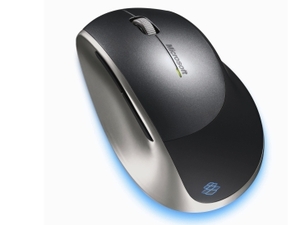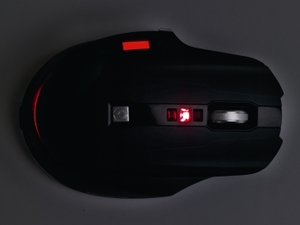
BlueTrack past, present and future
We managed to grab an interview with Bill Jukes, Microsoft Product Marketing Manager for Gaming, and asked him what Microsoft's aims were with BlueTrack, and where it was going in the future.bit-tech: What was the design goal when you were working on BlueTrack technology?
Bill Jukes: Before creating BlueTrack Technology, we did extensive consumer research that involved traveling to consumer homes to find out what surfaces people typically track on. We found that consumers are using their PCs everywhere so we wanted to develop a technology that allowed them to use their mouse everywhere too. While this “go anywhere” capability may not be the most important factor for gamers, we ensured that BlueTrack provided the best speeds and feeds available, which is very important to gamers.
bit: Specifically, how does BlueTrack operate differently from current optical and laser mouse technology?
Jukes: BlueTrack Technology tracks on more surfaces than optical or laser. It uses a powerful new tracking engine that combines “specular” optics with a blue beam. Specular optics is high-angle imaging optics that generates an exact replica of the surface instead of blurry, out of focus images, like leading laser mice. The blue beam is four times larger than the beam size on laser, allowing it to track on difficult surfaces. It is also less sensitive to dust and grime than laser.


The Microsoft Explorer Mouse (left) was the first BlueTrack mouse, and shouldn't be confused with Bill Jukes, Microsoft Product Marketing Manager for Gaming (right)
Also, the blue light operates differently than current mice because it allows the sensor to capture a high-contrast image of the surface. For example, the blue light beneficially interacts with fluorescent dyes in some surfaces to increase the amount of reflected light relative to an infrared laser beam. The physics is similar to that of the “blue light” used in crime-scene TV shows to examine surfaces for police investigations.
bit: Given the accuracy of current gaming mice, how is BlueTrack’s 75g tolerance and 120in/sec tracking beneficial to gamers?
Jukes: There are many different factors and inputs that improve tracking accuracy and performance; acceleration and speed being just two of them. For the SideWinder X8 Mouse, our Microsoft Hardware engineers have been able to tune the BlueTrack Technology performance specifications specifically for speed and acceleration that now exceed measurements of known human capability. This is important to gamers because they are continually pushing the technology limits of peripherals, and our goal is to always stay two steps ahead of them with our technologies. Because of BlueTrack, we’re way ahead of the competition, delivering the best speeds and feeds on the market.


The Sidewinder X8 can switch from wireless to wired mode quickly, easily and on-the-fly; it also looks quite nice when the lights are all off
bit: Did you face any problems transferring so much data over a USB interface?
Jukes: No, our engineering team was able to maximize our BlueTrack Technology performance specifications and 2.4GHz proprietary wireless performance with full-speed USB interface specifications. What this means is that we found a way to pass the data via the wireless device to the transceiver then to the PC using a 500Hz report rate USB technology with a virtually lag-free experience.
bit: Do you plan to license the technology to other companies ultimately giving BlueTrack the possibility of taking over from optical and laser mice or will it be Microsoft only?
Jukes: At this time BlueTrack Technology is available exclusively in Microsoft mice, but we’re always looking at the needs of consumers and may offer licensing opportunities in the future.

MSI MPG Velox 100R Chassis Review
October 14 2021 | 15:04








Want to comment? Please log in.